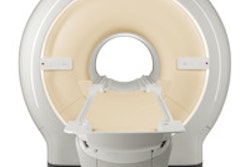
The rapid expansion of healthcare spending in China has led to improved healthcare facilities and increased patient access. As a result, pressure on large metropolitan hospitals has intensified. Overcrowding is now increasingly common in large hospitals, putting at risk China's target to achieve the 90% patient in-county-visit rate by 2020.
To counter this effect, the Chinese government has announced a new swathe of investment to develop county-based hospitals, offering a new opportunity for medical technology vendors in China. On January 4, 2015, the National Health and Family Planning Commission (NHFPC) released a formal supporting list of 500 county-level hospitals that will be highly supported by the central and regional government in the next three years.
Upon review of this list, IHS found a clear imbalance in support by region, providing a clearer view of how this new addressable market will develop.
Focus on Sichuan
According to this information, Sichuan will be the fastest growing province for county-level hospitals. Sichuan is expected to become the most developed healthcare center of excellence in southwest and northwest China. Zhejiang, Jiangsu, Shandong, and Hebei are projected to become strategically important tier 1 supported provinces due to the increased support from the government. IHS is expecting positive development in the above provinces. Despite the lower numbers of tier 2 hospitals, the importance of these cannot be underestimated due to the support from economically strong provinces such as Guangdong and Fujian.
It should also be noted that the development of county-based hospital infrastructure has not always been delivered as intended. Enhancing grass-roots hospitals has been the major emphasis of the NHFPC since an ambitious plan to reform Chinese healthcare was launched in 2009. However, development has not been as quick as the initial expectation proposed by the NHFPC, raising some concern over the new 2015 plans.
On the upside, the new list of county-level hospitals will provide a better map for suppliers in the healthcare industry, especially for medical electronics providers. Having already experienced strong growth in the metropolitan tier 3 hospitals, suppliers are now turning their attention to the lower-tier hospitals and rural areas.
IHS predicts that there will be more chances in the previously mentioned high-supported provinces; this could result in huge financial gain for medical technology suppliers. Meanwhile, providing adequate medical electronics to these county-level hospitals will be a key factor for suppliers. The government recently developed a "preferred supplier" list for medical technology that significantly favors local vendors.
For multinational suppliers to see the same growth in tier 2 and tier 1 hospitals as they experienced in the heyday of development in metropolitan hospitals, they will have to compete strongly with local suppliers. However, the equipment needs for county-level hospitals are very different from tier 3 and tier 2 hospitals in big cities in China. To make it clear, midrange and low-end medical electronics companies with reasonable pricing strategies should have more opportunities among county-level hospitals in the next three years in China.
Benjamin Niu is a market analyst at IHS for the Medical Devices and Healthcare IT research team. IHS Technology provides market research and consultancy services to the medical device industry. Coverage includes medical imaging equipment, clinical care devices, healthcare IT, consumer medical devices, medical displays, and wearable technologies. For more information, visit technology.ihs.com.
The comments and observations expressed herein are those of the author and do not necessarily reflect the opinions of AuntMinnie.com.



















